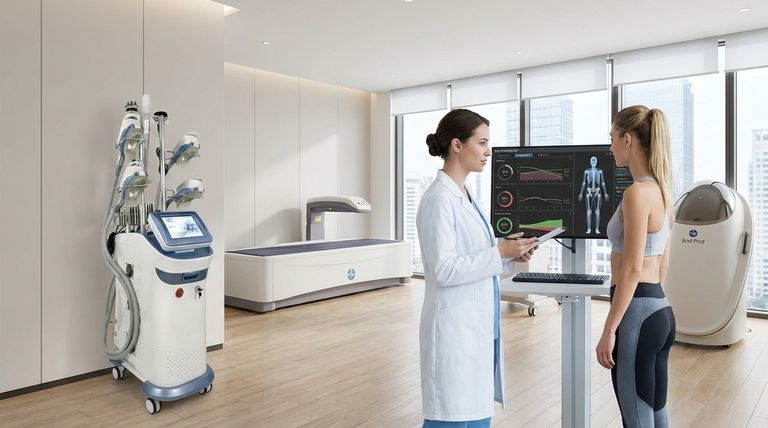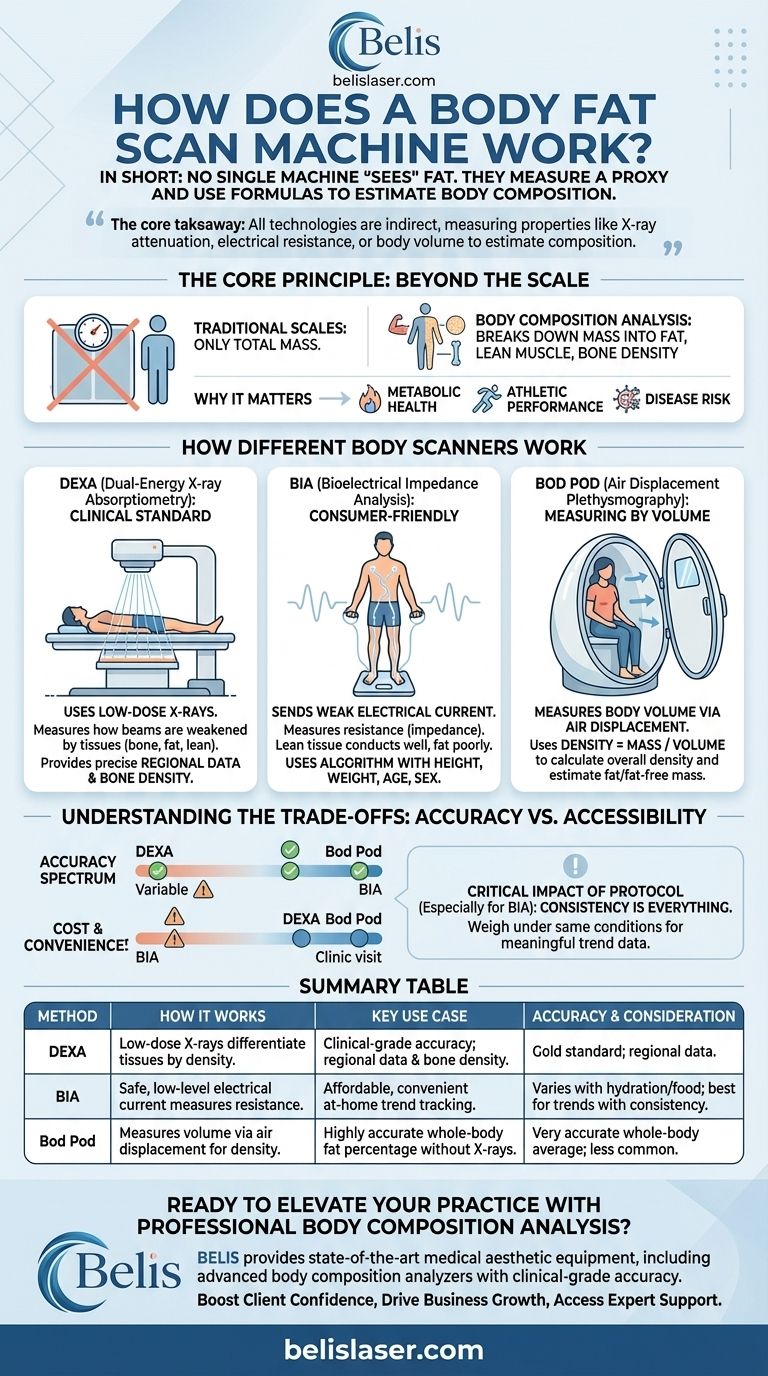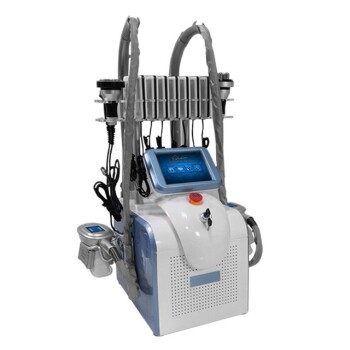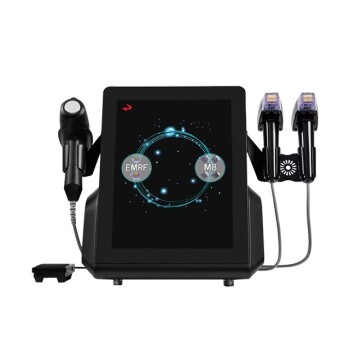In short, there is no single type of "body fat scan machine." Instead, several distinct technologies exist, each using a different physical principle to estimate body composition. The most common clinical method, DEXA, uses low-dose X-rays to differentiate between bone, fat, and lean mass based on their density, while popular consumer devices like smart scales use bioelectrical impedance (BIA) to estimate fat based on resistance to a weak electrical current.
The core takeaway is that no machine directly "sees" or measures body fat. They all measure a proxy—such as X-ray attenuation, electrical resistance, or body volume—and use scientific formulas to convert that data into an estimation of your body composition. The accuracy and detail of this estimation depend entirely on the technology used.

The Core Principle: Moving Beyond the Scale
Traditional scales only tell you your total mass, which is a limited and often misleading metric for health and fitness. Body composition analysis provides a far more insightful breakdown of what that mass consists of.
Why Body Fat Percentage Matters
Knowing your body fat percentage, lean muscle mass, and bone density gives you a much clearer picture of your metabolic health, athletic performance, and risk for certain diseases. Progress is not always reflected in total weight; you could be losing fat while gaining muscle.
The Challenge of Indirect Measurement
It is crucial to understand that all common body composition technologies are indirect. They measure a physical property and apply an algorithm to estimate the final numbers. The validity of the underlying algorithm and the consistency of the measurement protocol are just as important as the technology itself.
How Different Body Scanners Work
The term "body scan" can refer to several different methods, ranging from clinical-grade equipment to at-home consumer devices. They differ significantly in their mechanism, accuracy, and cost.
DEXA (Dual-Energy X-ray Absorptiometry): The Clinical Standard
A DEXA scan passes two very low-energy X-ray beams through your body. The machine measures how much each beam is attenuated (weakened) by the tissues it passes through.
Because bone, fat, and lean tissue absorb these X-ray energies at different and predictable rates, the software can construct a precise, three-component model of your body composition. It is highly valued for its ability to provide regional data, showing the exact distribution of fat and muscle in your arms, legs, and trunk.
BIA (Bioelectrical Impedance Analysis): The Consumer-Friendly Method
This is the technology used in most smart scales and handheld body fat analyzers. BIA works by sending a very low, imperceptible electrical current through your body.
The principle is simple: lean tissue, which is rich in water and electrolytes, conducts electricity well (low impedance). Fat tissue, which contains very little water, is a poor conductor (high impedance). The device measures this impedance and uses it, along with inputs like your height, weight, age, and sex, to estimate your body fat percentage.
Air Displacement Plethysmography (Bod Pod): Measuring by Volume
The Bod Pod is an egg-shaped chamber that measures your body's volume with a high degree of precision by analyzing changes in air pressure.
To determine your body composition, it uses the fundamental relationship: Density = Mass / Volume. After measuring your mass on a precise scale and your volume in the chamber, it calculates your overall body density. Established formulas can then use this density value to estimate your fat and fat-free mass percentages.
Understanding the Trade-offs: Accuracy vs. Accessibility
Choosing a method involves a trade-off between accuracy, cost, and convenience. No single method is best for every situation.
The Accuracy Spectrum
DEXA is widely considered a gold standard for its accuracy and detailed, regional reporting. Air Displacement (Bod Pod) is also highly accurate but provides a whole-body average rather than regional data.
BIA is the least accurate and most variable method. Its results can be heavily skewed by your hydration level, when you last ate, or if you've recently exercised. However, its strength lies in tracking trends over time if used consistently.
The Critical Impact of Protocol
For a BIA scale, consistency is everything. To get meaningful trend data, you must weigh yourself under the exact same conditions every time (e.g., first thing in the morning, after using the restroom, before eating or drinking).
For clinical methods like DEXA, the specific machine model, its software version, and the operator's training can introduce small variations. For tracking progress, it is best to use the same facility for every scan.
Cost and Convenience
BIA devices are inexpensive and can be used daily at home. DEXA and Bod Pod scans are significantly more expensive, require booking an appointment at a specialized clinic or lab, and are typically done only a few times per year.
Choosing the Right Scan for Your Goal
Your choice depends entirely on what you want to achieve. Use this guide to make an informed decision.
- If your primary focus is clinical-grade accuracy and bone density analysis: A DEXA scan is the unparalleled choice, providing the most detailed and reliable data.
- If your primary focus is tracking general trends conveniently and affordably: A high-quality BIA scale is effective, as long as you prioritize a consistent measurement routine above all else.
- If your primary focus is a single, highly accurate body fat measurement without X-rays: A Bod Pod or Hydrostatic Weighing (underwater weighing) are excellent, albeit less common, alternatives.
Understanding these methods empowers you to select the right tool to accurately measure what matters and guide your health and fitness journey.
Summary Table:
| Method | How It Works | Key Use Case | Accuracy & Key Consideration |
|---|---|---|---|
| DEXA | Uses low-dose X-rays to differentiate bone, fat, and lean tissue based on density. | Clinical-grade accuracy; detailed regional body composition and bone density analysis. | Gold standard for accuracy; provides regional data. |
| BIA (e.g., Smart Scales) | Sends a safe, low-level electrical current through the body; measures resistance (impedance). | Affordable, convenient at-home tracking of body fat trends over time. | Accuracy varies with hydration, food intake; best for tracking trends with consistent use. |
| Bod Pod | Measures body volume via air displacement to calculate body density (Density = Mass/Volume). | Highly accurate whole-body fat percentage measurement without X-rays. | Very accurate for whole-body averages; less common than DEXA. |
Ready to Elevate Your Practice with Professional Body Composition Analysis?
For medical aesthetics clinics and premium beauty salons, offering precise, reliable body composition analysis can significantly enhance your service portfolio and client trust. BELIS specializes in providing state-of-the-art medical aesthetic equipment, including advanced body composition analyzers that deliver clinical-grade accuracy.
By partnering with BELIS, you can:
- Boost Client Confidence: Offer detailed, accurate body composition reports that help clients track fat loss, muscle gain, and overall metabolic health.
- Drive Business Growth: Attract health-conscious clients seeking data-driven results from a trusted professional environment.
- Access Expert Support: Receive comprehensive training and support to integrate this technology seamlessly into your practice.
Take the next step in providing superior care. Contact BELIS today to explore our range of professional equipment and discover the perfect solution for your clinic or salon.
Visual Guide

Related Products
- Cryolipolysis Fat Freezing Cavitation Lipo Laser Machine
- Cryolipolysis Fat Freezing Machine and Ultrasonic Cavitation Device
- Cryolipolysis Fat Freezing Machine Ultrasonic Cavitation Fat Reducing Device
- EMSlim RG Laser Body Sculpting and Slimming Machine
- Cryolipolysis Fat Freezing Machine with Cavitation and Laser Lipolysis
People Also Ask
- What are the negatives of fat freezing? Understanding the Risks and Side Effects
- How many fat freezing sessions do you need? Achieve Your Body Contouring Goals
- How much weight can you lose with fat freezing? The Truth About Body Contouring vs. Weight Loss
- Do fat freezing machines really work? Achieve Non-Invasive Body Contouring
- Are there any risks with fat freezing? A guide to understanding cryolipolysis side effects



















